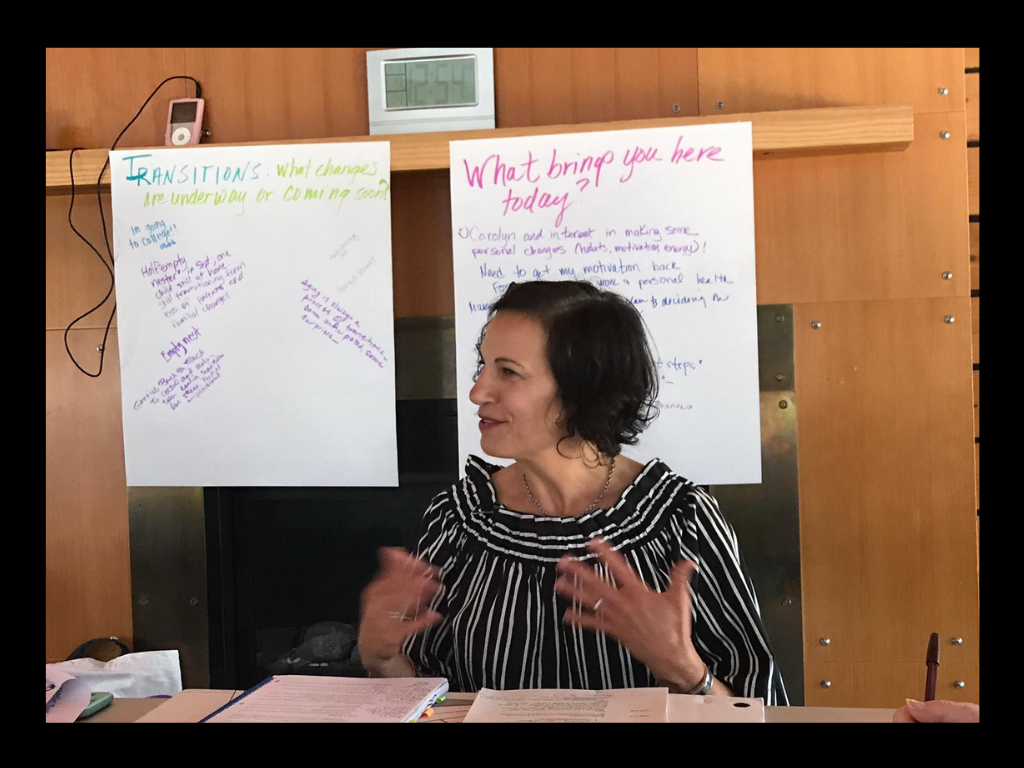
Overcoming Self-Sabotage: Helping Teachers Thrive
GUEST WRITER: Carolyn Parse is a mental fitness coach, grief educator, and former school counsellor currently based in Ireland. Carolyn works with educators and other individuals who want to begin the process of recognizing and intercepting their self-sabotage patterns to enjoy work and life more.
In this article she talks about:
- an approach called POSITIVE INTELLIGENCE® developed by executive coach and CEO Shirzad Chamine that organizes self-sabotage patterns into 10 types of inner saboteurs
- the 9 main ways we can self-sabotage our personal and professional success
- a saboteur assessment we can do to help us shift from just surviving to thriving
Read on to learn more about her story, experience, and tips for shifting from surviving to thriving.
SELF-SABOTAGE AND THE SELF-CARE RIPPLE EFFECT

I’ve worked with educators my entire career. In fact, I’ve spent my entire life with educators: my mom was a special education teacher, and my dad was a vocational teacher. All their friends were teachers, too. I grew up listening to stories of school-based struggles and successes. After university, I followed in their footsteps and became a career counsellor and work-based learning instructor at the same school at which my dad had taught. Most of my closest friends were in education (and still are).
So, after opening a private coaching practice, it was no surprise that most of my clients were educators. They were smart and dedicated to student learning and wellbeing. They took work home and were passionate about their subjects. They got frustrated with the systems that didn’t support real learning nor the teachers who were asked to teach, counsel, and parent their students.
Sometimes they felt undervalued, overwhelmed, overloaded, disempowered, and silenced. When they knew better, but weren’t given the agency to make needed changes, some even thought daily about leaving education. They knew what stress was but felt like they didn’t have power to influence the source of their stress, whether they believed it to be the school system, collegial conflict, student behaviour, or inadequate working conditions.
Their energy was focused on external stresses, and it was easy to see how they could spiral into a storm of negativity. Most of what stressed them they perceived to be outside their control. They knew that their wellbeing must come first in order for them to show up as the teachers they knew themselves to be. They did yoga, practiced mindfulness, exercised, socialized. They did their best to be good parents, friends, partners, community members, yet there seemed to be a disconnect between those activities and the moment they were confronted with their stressors.
As a coach, it became my mission to bridge all those supportive self-care practices they already had with a technique that would allow them to access that restful, positive state even in moments of stress and conflict found in daily life. This is where POSITIVE INTELLIGENCE® enters the scene.
WHAT IS POSITIVE INTELLIGENCE?
POSITIVE INTELLIGENCE® and the concept of the Positive Intelligence Quotient (PQ) were developed by executive coach and CEO Shirzad Chamine. Increasing our PQ allows us to embrace the gift and opportunity in life’s challenges, to feel less pain and more peace, less judgement of what should be, and more acceptance of what is, while still being able to take clear-headed, laser-focused action.
Originally designed for CEOs and the corporate world, this comprehensive, neuroscience-based approach to mental fitness is now finding its way into schools, families, and youth organizations. Along with neuroscience, this program pulls from positive psychology, performance science, and cognitive behavioural psychology.
Neuroscience tells us our brains have the capacity to keep learning and changing until we die. This means we can make new connections that shift the way we experience our lives from old negative patterns into new more positive patterns that lower our stress levels and allow us to enjoy, appreciate, and deeply experience our lives, regardless of circumstance.
POSITIVE INTELLIGENCE® focuses on connecting the two regions of the brain that help us thrive and survive. Chamine calls these the Sage Brain and the Saboteur Brain. The program framework involves strengthening three major “muscle” groups referred to as:
- Saboteur-Interceptor Muscles
- Self-Command Muscles
- Sage Muscles
All three muscle groups need attention in order to enjoy strong mental fitness. Next, I’ll give you a brief description of each and a few tools to get you started on your mental fitness journey.
ASSESSING AND UNDERSTANDING HOW WE SELf-SABOTAGE
WHAT ARE INNER SABOTEURS AND HOW CAN WE IDENTIFY THEM IN OURSELVES?
Saboteurs are personifications of our default modes of thinking and feeling that generate internal stress and interpersonal conflict. The Positive Intelligence definitions of our inner saboteurs encompass the concepts of inner critic, thought error, or gremlins found in popular psychology and coaching.
Based on their research, Chamine and his team uncovered 10 universal archetypes which they call “saboteur”. The greatest saboteur we all share is The Judge. The Judge sees the worst in ourselves, others, and our circumstances. It lies to us about what is possible and does whatever it can to keep us safe. This might be experienced by a running commentary in your head, constantly criticising everything and everyone. This saboteur can be NASTY and LOUD, but some people find it to be more insidious, like whisper that brews up inner conflict more subtly. The nine “Accomplice Saboteurs” include the Hyper Achiever, the Hyper Vigilant, the Hyper Rational, the Victim, the Avoider, the Restless, the Pleaser, the Stickler, and the saboteur I know too well, the Controller.
Most people have two or three that dominate. These saboteurs are not who we are, and they don’t necessarily originate from childhood trauma. They develop from innate inner strengths that become saboteurs only when abused or overused. When we name them, it’s easier to identify that we’re being hijacked and heading into survival mode. When we name then, we can separate ourselves from them, making it easier to intercept and soften them more quickly.
Chamine and his team have designed an assessment to help clients identify their most dominant or problematic saboteurs, so that they can begin the process of recognizing and intercepting them.
TIPS FOR TAKING THE ASSESSMENT AND READING THE RESULTS
- Be sure to answer the questions honestly; don’t answer them the way you think they should be answered (that’s your inner Judge guiding you), nor who you aspire to be. That said, give yourself credit where credit is due!
- When reading the results, remember that you’re looking for what does sound like your experience. If what you read doesn’t sound familiar, let it go. Saboteurs show up differently for different people
- Be aware that certain saboteurs can be defensive and suspicious of what they read on the assessment, particularly the Hyper-Rational, Controller, and Stickler. Notice whether this happens to you and feel free to explore the links for more information below.
- It’s also important to remember that identifying your most disruptive saboteurs is only the first step of the process; the assessment is a tool to help you acknowledge what you’d like to soften or change, but the change won’t happen from awareness alone. It must be paired with a focused attention practice to make changes in the brain.
- If you decide to take on this work with a coach, choose the Saboteur that attracts you the most, not the one you think you should work on. Should is always fueled by saboteur-energy. You’ll have more fun with the process if you start from a place of playful curiosity.
FROM SURVIVING TO THRIVING
SELF-COMMAND MUSCLES
With POSITIVE INTELLIGENCE® my clients practice daily PQ Reps to develop their Self-Command Muscles. These are 10-second sensory-based exercises that are practiced briefly and frequently throughout the day in order to create new pathways to the Sage Brain.
It was this practice that gave my clients (and me!) the breakthrough we were looking for. This practice can be done anywhere and at any time. You don’t need a mat, a cushion, privacy, or quiet to use these techniques. You do need commitment, high frequency, and consistency when starting out.
You can experience these techniques for yourself here.
SAGE MUSCLES
It’s a vulnerable process facing your saboteurs, so it’s important to start strengthening your Sage Response and Sage Perspective from the very beginning. When we have shifted, we are better able to utilize the Five Sage Powers of Empathy, Explore, Innovate, Navigate, and Activate. The ability to generate real empathy for both ourselves and others is the foundation for all the other responses. EFT Tapping can be a big support here, as many people have a lot of negative self-talk, blame, and shame that interfere with their ability have empathy for themselves.
To recap, increasing your PQ is a three-step process:
- Weaken the saboteur by detect that your “survival” part of your brain is “hijacked” and
noticing the thoughts and feelings associate with this state. - Strengthen your self-command by practicing focused attention (PQ Reps), diminishing
saboteur feelings and thoughts and leaving space for Sage thoughts and feelings. - Choose a Sage Response (this strengthens the “thrive” part of the brain).
As a coach, parent, yoga teacher, expat, and educator myself I am overflowing with gratitude for the holistic, sustainable changes I am making personally. Mental Fitness is a lifelong process. Some days are better than others and that’s okay. I love that my teacher clients have been able to experience more peace, calm, and satisfaction at work and at home. I love that they feel a sense of agency and empowerment. Now they know from experience that internal change is possible and that gives them hope.
One middle school English teacher who works with highly traumatized children shared the positive effects her own practice has had on her students. She explained how she’s been able to reset her energy between each of her six classes using her mental fitness practice. She then models and practices with her students the process of shifting from hectic, busy, survival mode to calm, focused, and present. In the beginning, they were understandably guarded. Some made jokes or refused to participate, but now they anticipate the beginning-of-class sharing circle, meditation, guided breathwork, or whatever else she is offering in terms of self-regulation. If she gets ahead of herself and forgets, they remind her.
It’s such a triumph in education to see a teacher’s own mental fitness practice make positive ripples in the classroom.
WANT TO LEARN MORE?
- Read a chapter of Shiraz Chamine’s book, Positive Intelligence: Why only 20% of Teams and Individuals Achieve their True Potential and How you Can Achieve Yours.
- Explore the PQ website
- Sample the PQ Gym
- Neuroscience of PI
- Research Foundation for PI Assessments
- Discover YOUR saboteurs
- What is your Positivity Quotient?
- Dr Shirzad Chamine’s Ted Talk on the inner saboteurs
If you would like more information on participating in my 12-week mental fitness adventure from October-December of 2022, please reach out to me at carolyn@intervallifecoach.com.
© Copyright Positive Intelligence. No reproduction, in any form, printed or electronic, is permitted without prior written permission from Positive Intelligence: www.positiveintelligence.com
ABOUT THE AUTHOR

Carolyn Parse is a former school counsellor, a tween mom, and has been working as an ICF-certified coach in Italy since 2016.



